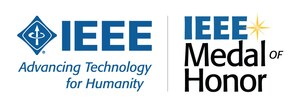IEEE Members Use Remote Sensing to Promote a Sustainable Future
Members Tap Technology to Mitigate Natural Disasters, Predict Climate Variability and Strengthen Ecosystem and Biodiversity Monitoring
PISCATAWAY, N.J., June 23 /PRNewswire/ -- IEEE, the world's largest technical professional association, and its members are applying engineering and technology principles to address issues of global environmental impact, including monitoring natural disasters and tracking man-induced hazards such as forest fires, oil spills and other types of chemical contamination.
By utilizing remote sensing technology to monitor behavior on the ground, as well as in the atmosphere and water, IEEE members are addressing a number of environmental and safety concerns through the application of earth observation research. These include:
- observing the ocean floor to sense and detect earthquakes;
- calculating measurements of plate tectonics to help the agriculture industry better assess soil quality;
- examining the Arctic Circle's ecosystem of ice formations and weather patterns to provide the shipping industry with critical safety information; and
- enhancing radar devices used to find victims of natural disasters, such as avalanches and earthquakes.
"We rely heavily on remote sensing to collect data on ocean and atmospheric systems that would otherwise be inaccessible," said Dr. Howard Michel, Senior Member, IEEE. "The technology has revolutionized the way in which we view the Earth, and monitor, predict and respond to otherwise catastrophic events."
The IEEE Committee on Earth Observations (ICEO) and the IEEE Geoscience and Remote Sensing Society (GRSS) are both deeply involved in the Global Earth Observation System of Systems (GEOSS), a complex system of sensors, communication devices, storage systems, computational and other devices used to observe the Earth and gather data. The development of standards by ICEO and GRSS ensures that remote sensing techniques are being used universally to acquire the global data that is necessary for understanding the environment.
IEEE members from around the world who are driving key earth observation initiatives:
- Dr. Ross Norman Chapman, IEEE Fellow and professor of ocean, earth and atmospheric sciences at the University of British Columbia, Canada, is a leading expert in seismo-acoustic propagation. His research, which focuses on the geophysical properties of the ocean floor, has contributed to the development of technologies that can be used to sense and detect the size, duration and strength of natural disasters and hazards.
- Dr. Valery Zavorotny, IEEE Fellow and researcher with the Earth Systems Research Laboratory, National Oceanic and Atmospheric Administration (NOAA), US, collaborated in the soil-moisture experiment between NASA, the US Department of Agriculture's Agricultural Research Service and academia, measuring plate tectonics and geological processes to assess snowpack, soil moisture and vegetation moisture.
- Dr. David Daniels, IEEE Fellow and head of sensor systems, ERA Technology, UK, is recognized for his work in ground-penetrating radar. Dr. Daniels has brought various mine-detecting products to the military and commercial enterprises. His systems are used for homeland security, crime prevention and the detection of missing individuals.
- Georg Heygster, IEEE member, is an environmental physicist in Germany observing the earth with satellites. His research on sea ice and weather help to improve weather prediction, climate research and ship safety.
- Professor Ya-Qiu Jin, IEEE Fellow and member of IEEE GRSS, has been leading the Key Laboratory of Wave Scattering and Remote Sensing Information at Fudan University, China, to carry out extensive research programs on the fundamentals and applications of microwave remote sensing on the global environment, including atmosphere, ocean and terrain surface hydrology.
- Dr. Yun Shao, IEEE member in China who works with the IEEE GRSS, is studying the possibility of earthquake signal detection through the use of space and ground observation technology in the microwave spectrum.
- Dr. Diane Evans, IEEE Fellow and director for the Earth, Science and Technology Directorate, NASA Jet Propulsion Laboratory, US, conducted research in the remote sensing industry that paved the way for advancing technologies in oceanography, the study of atmospheric composition and geophysics. She helped develop remote sensing techniques for earth surface geology using combined data sets from visible, infrared and radar satellites.
For more information on IEEE, or to speak with a sustainable world expert, please contact [email protected].
About IEEE
IEEE, the world's largest technical professional association, is dedicated to advancing technology for the benefit of humanity. Through its highly cited publications, conferences, technology standards, and professional and educational activities, IEEE is the trusted voice on a wide variety of areas ranging from aerospace systems, computers and telecommunications to biomedical engineering, electric power and consumer electronics. Learn more at http://www.ieee.org.
SOURCE IEEE
WANT YOUR COMPANY'S NEWS FEATURED ON PRNEWSWIRE.COM?
Newsrooms &
Influencers
Digital Media
Outlets
Journalists
Opted In




Share this article